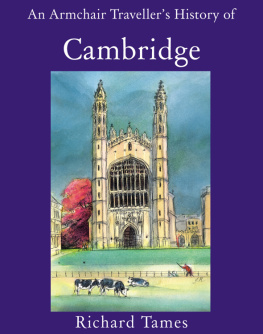First published in Great Britain in 2009 by Haus Publishing Ltd
This new, revised and extended edition published in 2012 by
The Armchair Traveller at the bookHaus
70 Cadogan Place, London SW1X 9AH
www.thearmchairtraveller.com
Cover image courtesy gettyimages
Copyright 2009 Desmond Seward and Susan Mountgarret
The moral rights of the authors have been asserted.
Maps copyright Martin Lubikowski
ebook ISBN 978-1-907973-76-5
A CIP catalogue record for this book is available from the British Library
All rights reserved.
Foreword: Old Apulia
It is clear that the God of the Jews did not know Puglia, or He would
not have given His people Palestine as the Promised Land.
The Emperor Frederick II
APULIA (OR PUGLIA) is the heel of Italy, stretching down from the spur of the Italian boot. Its landscape is often very beautiful and it has wonderful old cities with Romanesque cathedrals, Gothic castles and a great wealth of Baroque architecture, together with rupestrian churches that contain Byzantine frescoes. But, although far from inaccessible, until quite recently it was seldom visited by English-speaking tourists. Today, however, Apulia is becoming fashionable, an alternative to Tuscany. It is featured on radio and television; travel supplements describe its beaches and its cooking, supermarkets stock Apulian wine, oil, bread and pasta. Yet almost nothing about the region has been published in English since the days of Norman Douglas and the Sitwells. And there is no popular introduction to Apulian history, not even in Italian. Our book has been written to fill this gap.
Both of us believe that to understand the present you must know the past, and this is a portrait of the old Apulia, concentrating on its people, its heroes and its shrines. Whenever possible, we have made a point of using accounts by early travellers, since the landscape has changed surprisingly little. You can still see it with eighteenth or nineteenth century eyes.
Geographically, in northern Apulia the mountainous Gargano contrasts starkly with the flat Tavoliere, while going south and west the stony plateau of the Alta Murgia, Apulia Petrosa, has little in common with either. On the western border great wheat-fields sweep up to the hills of Basilicata. Much of the ground is limestone karst, the Apulian Platform, through which rain-water seeps down so quickly that there are virtually no streams or lakes. The rest, which a million years ago was under the sea, is mainly soft tufa filled with fossilised shells, and gashed by long ravines (gravine) riddled with caves; many of the ravines are choked by prickly pear, especially in coastal areas. Everywhere the fields are divided by dry-stone walls. There are innumerable orchards; in spring you can drive through mile upon mile of blossom almond, peach or cherry while the ground is covered by an almost vulgar profusion of wild flowers. But the most characteristic and most prized tree in Apulia is the olive, that lives for five hundred years (some say for two thousand) and whose silver-green groves cover vast tracts of dark-red Apulian soil.
The landscape is not only unlike Northern Italy, it is unlike the rest of the Mezzogiorno. There is no resemblance to mountainous Calabria or harsh Basilicata. Much of the soil is extremely fertile, so that there has always been great wealth for those who own the land, while the seaports are ideally placed for trade with the Levant. The people, too, are subtly different from other Southerners, although they are no less secretive and have the same beautiful manners.
Apulias history is one of repeated invasion and conquest. The first known settlers were the Messapians from the Balkans, followed by the Greeks in about 800 BC, both absorbed and Latinised by the Romans. Goths arrived in the fifth century AD, soon evicted by a Byzantine reconquest, but followed by a further wave of Germans, the Lombards. After this, Saracens laid the region to waste, enslaving its inhabitants and establishing short-lived emirates at Bari and Tranto. Then came a Byzantine revival, accompanied by Greek re-colonisation.
The Norman conquest of the eleventh century established a kingdom that endured for seven hundred years. The Regno was medieval Italys most feudal state and Apulia possessed its most lordly fiefdoms, with vast estates whose lords dominated the cities. The kingdom was inherited in 1194 by the Hohenstaufen, brutally displaced seventy years later by the Angevins, who reigned until 1442. Then followed the Aragonese kings, dethroned in 1501, after which Southern Italy was governed by Spanish viceroys until 1713, briefly succeeded by Austrians. From 1734 to 1860 the Regno was ruled by a branch of the Bourbons. The Borbonis reign was interrupted in 1799 by the Neapolitan Republic, and again from 180615 by a French occupation under Joseph Bonaparte and Marshal Murat.
The Risorgimento of 1860 was far from being a liberation. During the late nineteenth century new speculator landlords reduced Apulian labourers to near slavery, one in ten emigrating during the decade before 1915 and many others leaving after the Second World War. During modern times, however, life here has been transformed by the coming of the water. Formerly in desperately short supply, it came first from the Abruzzi through the Great Aqueduct completed in 1939 and then from wells sunk deep into the tufa after 1945.
The Apulians have always possessed a genius for survival. They escaped from the Goths and later the Saracens by living in cave-cities, hewing grotto churches out of the rock. In spite of their Norman conquerors harsh rule, they amassed so much wealth from exporting oil, wine, almonds and wool to the Levant that they were able to build gleaming white towns above ground, while during the seventeenth century, despite plague and Spanish taxation they created the lovely Baroque city of Lecce. They warded off brigands or corsairs with













